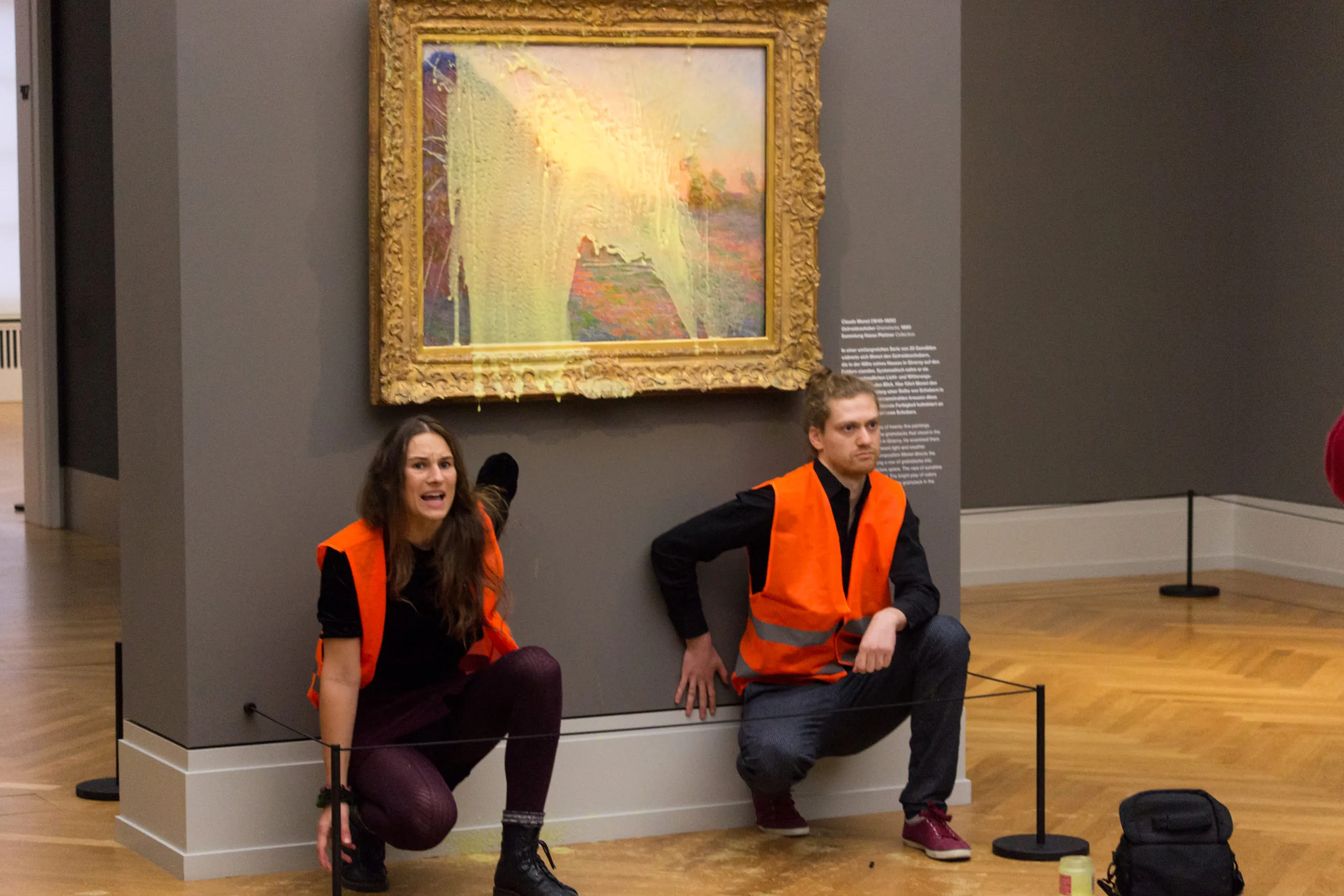On Sunday, a Claude Monet painting was briefly covered in starch when climate protestors threw mashed potatoes at it. This was the latest in a series of art-related actions meant to draw attention to climate change and environmental destruction.
The painting, an 1890 work known as Meules, was bought at auction by ARTnews Top 200 Collector Hasso Plattner in 2019 for $110.7 million. It is on loan from his collection to the Museum Barberini, the Potsdam institution where works from Plattner’s collection have frequently been on view since the space’s opening in 2017.
Letzte Generation, the German activist group that led the protest, said in a statement afterward that “the painting was not damaged in the action. Quite in contrast to the immeasurable suffering that floods, storms and droughts are already bringing upon us today as harbingers of the impending catastrophe.”
The Museum Barberini also said in a statement posted to social media that Meules was not harmed because the painting is “glazed.” The museum plans to put the work back on view on Wednesday.
Activists with Letzte Generation said in comments to the media that the protest was meant to highlight the contrast between the idyllic nature portrayed by Monet and the dangers currently posed to real-life scenes like it.
Aimée van Baalen, a spokesperson for the group, said in a statement, “Monet loved nature and captured its unique and fragile beauty in his works. How is it that so many are more afraid of damaging one of these images of reality than of the destruction of our world itself, the magic of which Monet admired so much?”
In video of the demonstration, two protestors pick up containers filled with mashed potatoes, splash them onto the painting, and glue their hands to the wall beneath the piece. All the while, the potatoes run down the canvas, onto its surrounding frame.
The action was clearly meant to recall one staged earlier this month at the National Gallery in London by Just Stop Oil, the climate change–focused group that appears to have initiated these kinds of protests in art museums in recent months.
Just Stop Oil had already done protests in which they superglued themselves to the frames of works at the Kelvingrove Art Gallery and Museum in Glasgow, the Manchester Art Gallery, and the Royal Academy. They seem to have spurred activists in Italy, Australia, and other countries to take up similar demonstrations.
Letzte Generation has itself previously targeted paintings by Lucas Cranach the Elder and Raphael at museums in Berlin and Dresden. While the public response from art experts in most countries has been somewhat muted, German officials decried the Letzte Generation actions, with the German Cultural Council issuing a public plea for the protests to stop because they were endangering beloved artworks.
But it was Just Stop Oil’s National Gallery action which generated the greatest outrage, with critics, politicians, and more accusing the group of failing to realize the potentially damaging effects of their actions.
At the National Gallery, two young activists threw tomato soup against a Vincent van Gogh painting of flowers, then pasted themselves to a wall. They said they were seeking to push the British government to take quicker action to combat the effects of climate change. The van Gogh painting was not damaged.
An outpouring soon followed, as many expressed confusion, anger, and horror over the protest.
Mirjam Herrmann, an activist with Letzte Generation, seemed to directly respond to the handwringing over the Just Stop Oil protest on Sunday. At the protest, she said, “People are starving, people are freezing, people are dying. We are in the climate catastrophe. And all you’re afraid of is tomato soup or mashed potatoes on a painting. Do you know what I’m afraid of?”
Source link
Related
























